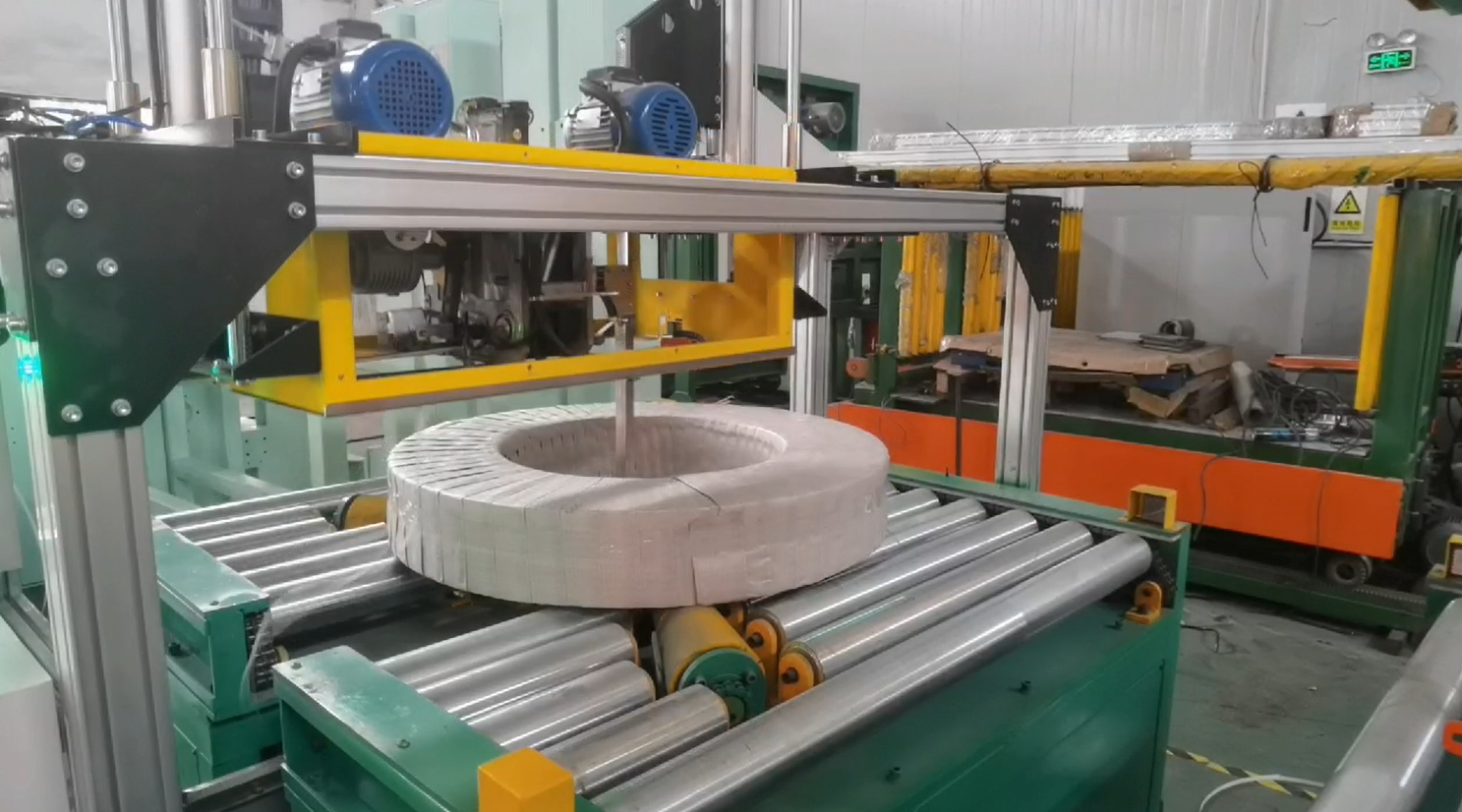Enhancing Steel Coil Handling: The Role of Automated Strapping Technology
In the demanding environment of steel processing and distribution, the safe and efficient handling of steel coils is paramount. Damage during storage or transit not only leads to material loss but can also disrupt production schedules and compromise worker safety. Automated steel coil strapping machines represent a significant technological advancement, addressing these challenges by providing consistent, high-integrity strapping for coils of various sizes and weights. This technology is crucial for steel service centers, mills, and large-scale fabricators seeking to optimize logistics and protect valuable inventory.
Operational Principles and Core Technology
This automatic steel coil strapping machine is engineered to securely unitize steel coils, preparing them for safe handling, storage, and transportation. Its operation integrates several key technologies common in modern packaging automation, reflecting principles often detailed in packaging engineering resources and patent literature (e.g., advancements in strap feeding mechanisms and tensioning controls).
The process typically involves:
- Coil Positioning: Coils are placed onto a robust turntable or conveyor system integrated into the machine frame. Optional centering devices can assist with aligning coils, particularly those with irregular dimensions.
- Strap Feeding: A sophisticated strap feeding system guides high-tensile steel strapping (or sometimes PET strapping, depending on the application and machine configuration) around the circumference or through the eye of the coil. Precision guiding arms, often servo-controlled, ensure accurate placement.
- Automated Tensioning: Once the strap is positioned, a high-force tensioning head applies controlled tension. Modern systems utilize electric or hydraulic mechanisms capable of achieving pre-set, consistent tension levels, crucial for coil stability. Research indicates that improper or inconsistent tension is a major factor in transit damage. Tension levels are often programmable via a Human-Machine Interface (HMI).
- Sealing/Joining: The strap ends are securely joined. Common methods include notch sealing or seal-less friction-weld joints (Reference: Developments in friction-weld technology offer high joint efficiency, often exceeding 80% of the strap's break strength, as highlighted in various packaging technology journals).
- Cutting: The strap is automatically cut flush, leaving no hazardous sharp edges.
- Indexing/Rotation: For multiple straps, the coil is automatically rotated or indexed to the next strapping position, ensuring uniform spacing as per requirements.

steel coil strapping machinery
The entire sequence is managed by a Programmable Logic Controller (PLC), coordinating motors, sensors, and actuators for seamless, reliable operation. Diagnostics and operational parameters are typically accessible via the HMI touch screen.
Key Specifications and Features
While specific models vary, typical capabilities of industrial automatic steel coil strapping machines include:
- Coil Diameter Range: Accommodates a wide range, often from approximately 450 mm (18 inches) ID to 1800 mm (72 inches) OD, and varying widths.
- Coil Weight Capacity: Designed for heavy loads, commonly handling coils up to 5 metric tons or significantly more, depending on the machine class.
- Strapping Material: Primarily designed for high-tensile steel strapping (e.g., gauges from 0.8mm to 1.2mm, widths 19mm to 32mm). Some models may be adaptable for heavy-duty PET strapping.
- Strapping Heads: Utilizes robust heads engineered for reliability and consistent joint strength. Features often include automated strap loading and fault detection.
- Control System: PLC-based (e.g., Siemens, Allen-Bradley) with HMI for parameter setting, recipe storage, and diagnostics.
- Tension Control: Electronically or hydraulically adjustable tension settings ensure optimal security without damaging the coil edges.
- Safety Features: Incorporates safety interlocks, light curtains, and emergency stop systems compliant with industrial safety standards (e.g., ISO 13849).
- Optional Enhancements: Integrated weighing systems, coil tilting/down-ending integration, edge protector application systems, data logging for quality control.
Benefits for Metal Processing Operations
The adoption of automated steel coil strapping offers tangible advantages, frequently cited in industry publications like The Fabricator when discussing process improvements:
- Enhanced Safety: Significantly reduces manual handling risks associated with tensioning and cutting steel straps, minimizing potential injuries. Securely strapped coils are also safer to lift and transport.
- Improved Product Integrity: Consistent and precise strap tension prevents coil telescoping or clock-springing during handling and shipment, reducing costly material damage and customer claims.
- Increased Throughput: Automation drastically reduces the time required per coil compared to manual or semi-automatic methods, boosting overall plant productivity. Cycle times are predictable and consistent.
- Labor Optimization: Frees up personnel from strenuous and repetitive manual strapping tasks, allowing them to be redeployed to more value-added activities.
- Operational Consistency: Eliminates variability inherent in manual strapping, ensuring every coil is strapped to the same high standard, enhancing quality control.
- Reduced Material Waste: Precise strap feeding and cutting minimize strap wastage compared to manual operations.
Integration and Customization
Modern strapping systems are often designed for integration into larger automated coil processing or packaging lines. They can interface with conveyors, upenders, downenders, and warehouse management systems (WMS) or Manufacturing Execution Systems (MES) for data exchange and centralized control. Customization options allow tailoring the machine configuration to specific coil types (e.g., slit coils, cold rolled, hot rolled, galvanized, aluminum), plant layouts, and throughput requirements.
Conclusion: A Strategic Investment in Efficiency and Safety
Investing in an automatic steel coil strapping machine is more than just an equipment upgrade; it's a strategic move towards greater operational efficiency, enhanced worker safety, and improved product quality assurance in the demanding steel industry. By automating a critical, yet often labor-intensive process, manufacturers, service centers, and distributors can achieve significant improvements in productivity and reduce the costs associated with handling damage and workplace injuries. The rugged construction, precision control, and programmable flexibility of these machines make them an optimal choice for operations handling a significant volume of steel coils, ensuring they are professionally prepared for subsequent handling, storage, or transport.
For more steel coil packing machine and steel coil strapping machine free consultation just here.

